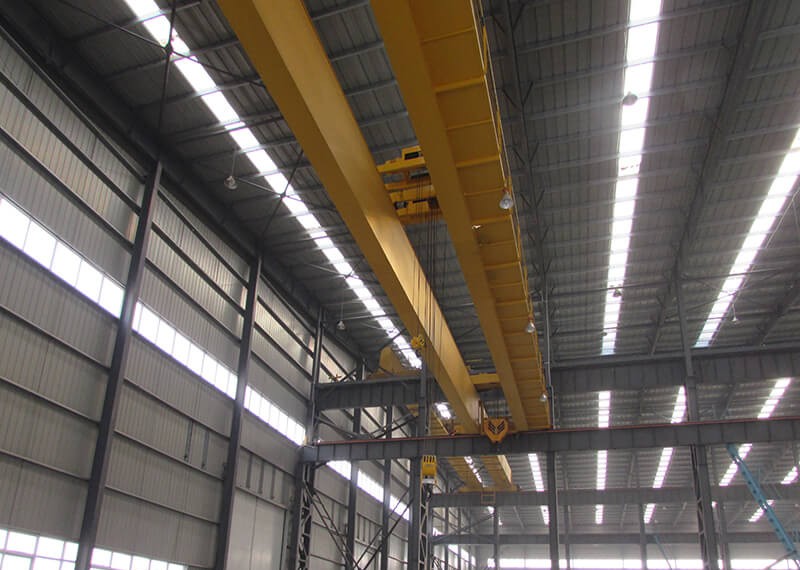
Overhead crane wheel heats up
The wheels of the overhead crane trolley belong to the open gear transmission, that is, there is a set of ring gear on the outside of the wheel, which meshes with the output gear of the reducer. Because of the poor working environment and smooth conditions of open gears, wheel damage of single-tooth cranes mostly occurs on the gears. The common forms of damage to the outer gear ring are: broken teeth, excessive wear, and tooth surface shedding beyond the permitted range. The main reasons for these problems are the instability of the overhead crane trolley, large working shock and vibration; insufficient wheel accuracy, resulting in poor gear meshing; poor heat treatment of gears, surface hardness, etc.
Overhead crane motors often generate heat, which shortens their service life. The difference of the thermal expansion coefficient of each part of the motor will cause the change of the structural stress and the slight change of the internal air gap, and also affect the dynamic response of the motor, which may lose step at high speed. In the case of high operating frequency, the motor simply generates heat. Especially in summer, the temperature difference between the surface and the inside of the motor in use is small, and the heat dissipation is not ideal. The motor heats up for a long time, which simply causes the motor to run at high load.
In order to deal with these problems, it is necessary to check the accuracy of the trolley wheels and the meshing scale of the gears. After eliminating the first two reasons, the damaged gear should be replaced, and the surface hardness of the replaced gear should be tested, and the transmission organization should be added through frequency conversion transmission to reduce the impact of starting and braking and prolong the service life. In addition to gear defects, the wheelset also has flange wear, bearing damage, and shaft damage. For flange damage, check whether the single-beam crane trolley has rail gnawing. Bearing damage is generally due to bearing selection or bearing quality problems. Shaft damage is related to shaft heat treatment and device accuracy.
When the "jogging" action is frequent, the motor of the bridge crane is often in the process of starting, braking, forward and reverse. The load is very irregular, sometimes light and sometimes heavy, and often accepts larger overloads and mechanical shocks, and is in intermittent periodic work mode. In the starting process of the bridge crane, most of the losses are consumed in the resistors, and a small part of the losses are caused by the series resistance of the rotor. However, because of the large starting current, the power loss during the starting process is still much higher than the power loss at the rated speed. In addition, the temperature rise of the motor will increase with the increase of the number of starts due to the influence of the decrease of the heat dissipation coefficient during the starting process.
In summary, first find out the cause of the problem and deal with it, and then replace the corresponding parts. If there are few design options, it is necessary to consider replacing other products with high bearing capacity, such as ball bearings, general carbon steel shafts, alloy materials, etc.


